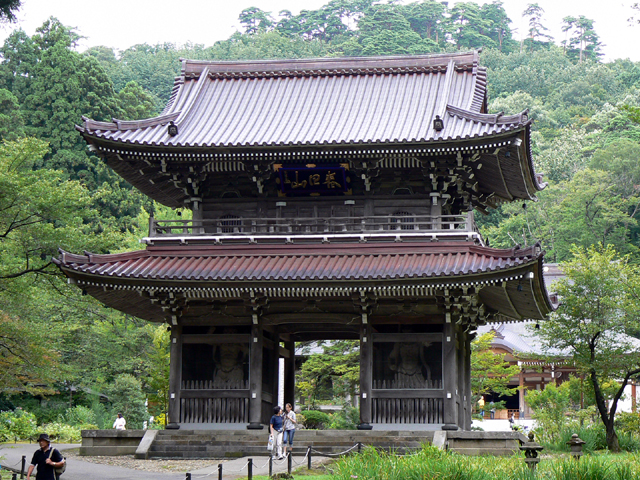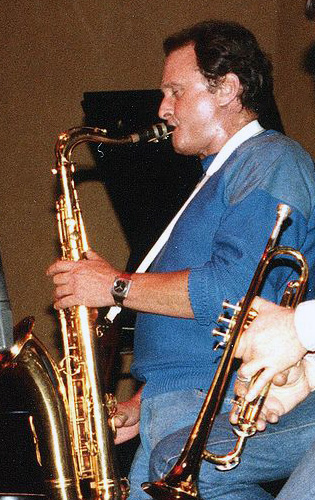|
Blind Willow, Sleeping Woman
is a collection of 24 short stories by Japanese author Haruki Murakami. The stories contained in the book were written between 1980 and 2005, and published in Japan in various magazines and collections. The contents of this compilation was selected by Murakami and first published in English translation in 2006 (its Japanese counterpart was released later in 2009). Around half the stories were translated by Philip Gabriel with the other half being translated by Jay Rubin. In this collection, the stories alternate between the two translators for the most part. Murakami considers this to be his first real English-language collection of short stories since ''The Elephant Vanishes'' (1993) and considers '' after the quake'' (2000) to be more akin to a concept album, as its stories were designed to produce a cumulative effect. In the introductory notes to the English-language edition of ''Blind Willow, Sleeping Woman'', Murakami declares, "I find writing novels a challenge, writing st ... [...More Info...] [...Related Items...] OR: [Wikipedia] [Google] [Baidu] |
Philip Gabriel
James Philip Gabriel (born 1953) is an American translator and Japanologist. He is a full professor and former department chair of the University of Arizona's Department of East Asian Studies and is one of the major translators into English of the works of the Japanese novelist Haruki Murakami. Gabriel was born in 1953 at Fort Ord, California. Gabriel earned an undergraduate degree in Chinese and a Master's in Japanese. He taught in Japan for seven years in the late 1970s and 1980s. He later completed a doctorate in Japanese at Cornell University. Gabriel is also the translator of works by Nobel Prize-winner Kenzaburō Ōe, such as ''Somersault'', and Senji Kuroi, such as ''Life in the Cul-De-Sac''. Dr. Gabriel is also the author of ''Mad Wives and Island Dreams: Shimao Toshio'' and the ''Margins of Japanese Literature''. He is currently a professor of modern Japanese literature and Department head of East Asian Studies at the University of Arizona in Tucson, Arizona, and his tra ... [...More Info...] [...Related Items...] OR: [Wikipedia] [Google] [Baidu] |
Niigata Prefecture
is a Prefectures of Japan, prefecture in the Chūbu region of Honshu of Japan. Niigata Prefecture has a population of 2,227,496 (1 July 2019) and is the List of Japanese prefectures by area, fifth-largest prefecture of Japan by geographic area at . Niigata Prefecture borders Toyama Prefecture and Nagano Prefecture to the southwest, Gunma Prefecture to the south, Fukushima Prefecture to the east, and Yamagata Prefecture to the northeast. Niigata, Niigata, Niigata is the capital and largest city of Niigata Prefecture, with other major cities including Nagaoka, Niigata, Nagaoka, Jōetsu, Niigata, Jōetsu, and Sanjō, Niigata, Sanjō. Niigata Prefecture contains the Niigata Major Metropolitan Area centered on Niigata with a population of 1,395,612, the largest metropolitan area on the Sea of Japan coast and the twelfth-largest in Japan. Niigata Prefecture is part of the historic Hokuriku region and features Sado, Niigata, Sado Island, the sixth largest island of Japan in area follo ... [...More Info...] [...Related Items...] OR: [Wikipedia] [Google] [Baidu] |
Roppongi
is a district of Minato, Tokyo, Japan, famous for the affluent Roppongi Hills development area and popular night club scene. A few foreign embassies are located near Roppongi, and the night life is popular with locals and foreigners alike. It is in the central part of Tokyo, south of Akasaka and north of Azabu. History The name ''Roppongi'', which appears to have been coined around 1660, literally means "six trees". Six very old and large zelkova trees used to mark the area; the first three were cleared, and the last were destroyed during World War II. Another legend has it that the name comes from the fact that six ''daimyōs'' lived nearby during the Edo period, each with the kanji character for "tree" or a kind of tree in their names. Roppongi was not extensively populated until after the Meiji Restoration, although the area was trafficked for centuries and served as the site of the cremation of Shōgun Tokugawa Hidetada's wife in 1626.Gary CooperGood ol' six trees—the way ... [...More Info...] [...Related Items...] OR: [Wikipedia] [Google] [Baidu] |
Fort Apache (film)
''Fort Apache'' is a 1948 American Western film directed by John Ford and starring John Wayne and Henry Fonda. The film was the first of the director's "cavalry trilogy" and was followed by ''She Wore a Yellow Ribbon'' (1949) and ''Rio Grande'' (1950), both also starring Wayne. The screenplay was inspired by James Warner Bellah's short story "Massacre" (1947). The historical sources for "Massacre" have been attributed both to George Armstrong Custer and the Battle of Little Bighorn and to the Fetterman Fight. The film was one of the first to present an authentic and sympathetic view of Native Americans. In his review of the DVD release of ''Fort Apache'' in 2012, ''New York Times'' movie critic Dave Kehr called it "one of the great achievements of classical American cinema, a film of immense complexity that never fails to reveal new shadings with each viewing" and "among the first 'pro-Indian' Westerns" in its portrayal of indigenous Americans with "sympathy and respect". T ... [...More Info...] [...Related Items...] OR: [Wikipedia] [Google] [Baidu] |
Los Angeles Times
The ''Los Angeles Times'' (abbreviated as ''LA Times'') is a daily newspaper that started publishing in Los Angeles in 1881. Based in the LA-adjacent suburb of El Segundo since 2018, it is the sixth-largest newspaper by circulation in the United States. The publication has won more than 40 Pulitzer Prizes. It is owned by Patrick Soon-Shiong and published by the Times Mirror Company. The newspaper’s coverage emphasizes California and especially Southern California stories. In the 19th century, the paper developed a reputation for civic boosterism and opposition to labor unions, the latter of which led to the bombing of its headquarters in 1910. The paper's profile grew substantially in the 1960s under publisher Otis Chandler, who adopted a more national focus. In recent decades the paper's readership has declined, and it has been beset by a series of ownership changes, staff reductions, and other controversies. In January 2018, the paper's staff voted to unionize and final ... [...More Info...] [...Related Items...] OR: [Wikipedia] [Google] [Baidu] |
Kirkus Reviews
''Kirkus Reviews'' (or ''Kirkus Media'') is an American book review magazine founded in 1933 by Virginia Kirkus (1893–1980). The magazine is headquartered in New York City. ''Kirkus Reviews'' confers the annual Kirkus Prize to authors of fiction, nonfiction, and young readers' literature. ''Kirkus Reviews'', published on the first and 15th of each month; previews books before their publication. ''Kirkus'' reviews over 10,000 titles per year. History Virginia Kirkus was hired by Harper & Brothers to establish a children's book department in 1926. The department was eliminated as an economic measure in 1932 (for about a year), so Kirkus left and soon established her own book review service. Initially, she arranged to get galley proofs of "20 or so" books in advance of their publication; almost 80 years later, the service was receiving hundreds of books weekly and reviewing about 100. Initially titled ''Bulletin'' by Kirkus' Bookshop Service from 1933 to 1954, the title was ... [...More Info...] [...Related Items...] OR: [Wikipedia] [Google] [Baidu] |
The 1963/1982 Girl From Ipanema
''The 1963/1982 Girl from Ipanema'' (1963/1982年のイパネマ娘; ''1963/1982-nen no Ipanema-musume'') is a short story by Japanese author Haruki Murakami, written in 1982. The title references "The Girl from Ipanema", the famous Bossa nova song that was first released in March 1964 in the album ''Getz/Gilberto''. The story follows the musings of an unnamed narrator as he contemplates the song, detailing one memory to the next. It culminates in his meeting with the metaphysical girl from the song, and his expression of longing for a union with her. The story was first translated into English by Jay Rubin in 2002, with excerpts appearing in his book ''Haruki Murakami and the Music of Words'', in 2005. A full English translation was intended to be included in ''Blind Willow, Sleeping Woman'' (2006), an anthology of short stories by Murakami; but it was omitted from the final publication. The full story remained unpublished until 2018 when it was included in ''The Penguin Book ... [...More Info...] [...Related Items...] OR: [Wikipedia] [Google] [Baidu] |
Tony Takitani
is a 2004 Japanese film directed by Jun Ichikawa, based on the short story by Haruki Murakami. Inspiration Haruki Murakami was intrigued by the name Tony Takitani when, at a garage sale on Maui, he found a yellow T-shirt that said, "Tony Takitani, House (D)." At the time, Takitani was running for office. Murakami decided to write the man's life story as this short story. Plot summary Takitani Shozaburo, a jazz trombonist from Japan, spends the Second World War in China. Shozaburo is imprisoned and many of his fellow inmates are executed. He expects he will be executed, and he is shown curled up on the floor of his cell. However, he survives and in 1946 returns to Japan where he marries a distant relative on his mother's side. A year later they have a child, Tony, but Tony's mother dies three days after giving birth to him. Shozaburo continues to travel and is away from home most of the time. Because of Tony's Americanised name, people often react oddly or sometimes with hos ... [...More Info...] [...Related Items...] OR: [Wikipedia] [Google] [Baidu] |
Norwegian Wood (novel)
is a 1987 novel by Japanese author Haruki Murakami. The novel is a nostalgic story of loss and burgeoning sexuality. It is told from the first-person perspective of Toru Watanabe, who looks back on his days as a college student living in Tokyo. Through Watanabe's reminiscences, readers see him develop relationships with two very different women—the beautiful yet emotionally troubled Naoko, and the outgoing, lively Midori. This novel is set in late 1960s Tokyo during a period when Japanese students, like those of many other nations, were protesting against the established order. While it serves as the backdrop against which the events of the novel unfold, Murakami (through the eyes of Watanabe and Midori) portrays the student movement as largely weak-willed and hypocritical. Murakami adapted the first section of the novel from an earlier short story, "Firefly". The story was subsequently included in the collection '' Blind Willow, Sleeping Woman''. ''Norwegian Wood'' was hugel ... [...More Info...] [...Related Items...] OR: [Wikipedia] [Google] [Baidu] |
Granta
''Granta'' is a literary magazine and publisher in the United Kingdom whose mission centres on its "belief in the power and urgency of the story, both in fiction and non-fiction, and the story’s supreme ability to describe, illuminate and make real." In 2007, ''The Observer'' stated: "In its blend of memoirs and photojournalism, and in its championing of contemporary realist fiction, ''Granta'' has its face pressed firmly against the window, determined to witness the world." Granta has published twenty-seven laureates of the Nobel Prize in Literature. Literature published by Granta regularly win prizes such as the Forward Prize, T. S. Eliot Prize, Pushcart Prize and more. History ''Granta'' was founded in 1889 by students at Cambridge University as ''The Granta'', edited by R. C. Lehmann (who later became a major contributor to ''Punch''). It was started as a periodical featuring student politics, badinage and literary efforts. The title was taken from the medieval name ... [...More Info...] [...Related Items...] OR: [Wikipedia] [Google] [Baidu] |
Timothy McSweeney's Quarterly Concern
''Timothy McSweeney's Quarterly Concern'' is an American literary journal, founded in 1998, typically containing short stories, reportage, and illustrations. Some issues also include poetry, comic strips, and novellas. ''The Quarterly Concern'' is published by McSweeney's based in San Francisco and it has been edited by Dave Eggers. The journal is notable in that it has no fixed format, and changes its publishing style from issue to issue, unlike more conventional journals and magazines. The first issue featured only works that had been rejected by other publications, but the journal has since begun publishing pieces written with McSweeney's in mind. History ''McSweeney's'' was founded in 1998 after Dave Eggers left an editing position at ''Esquire (magazine), Esquire'', during the same time he was working on ''A Heartbreaking Work of Staggering Genius''. ''McSweeney's'' is a sort of successor to Eggers' earlier magazine project ''Might (magazine), Might'', although ''Might'' was ... [...More Info...] [...Related Items...] OR: [Wikipedia] [Google] [Baidu] |




